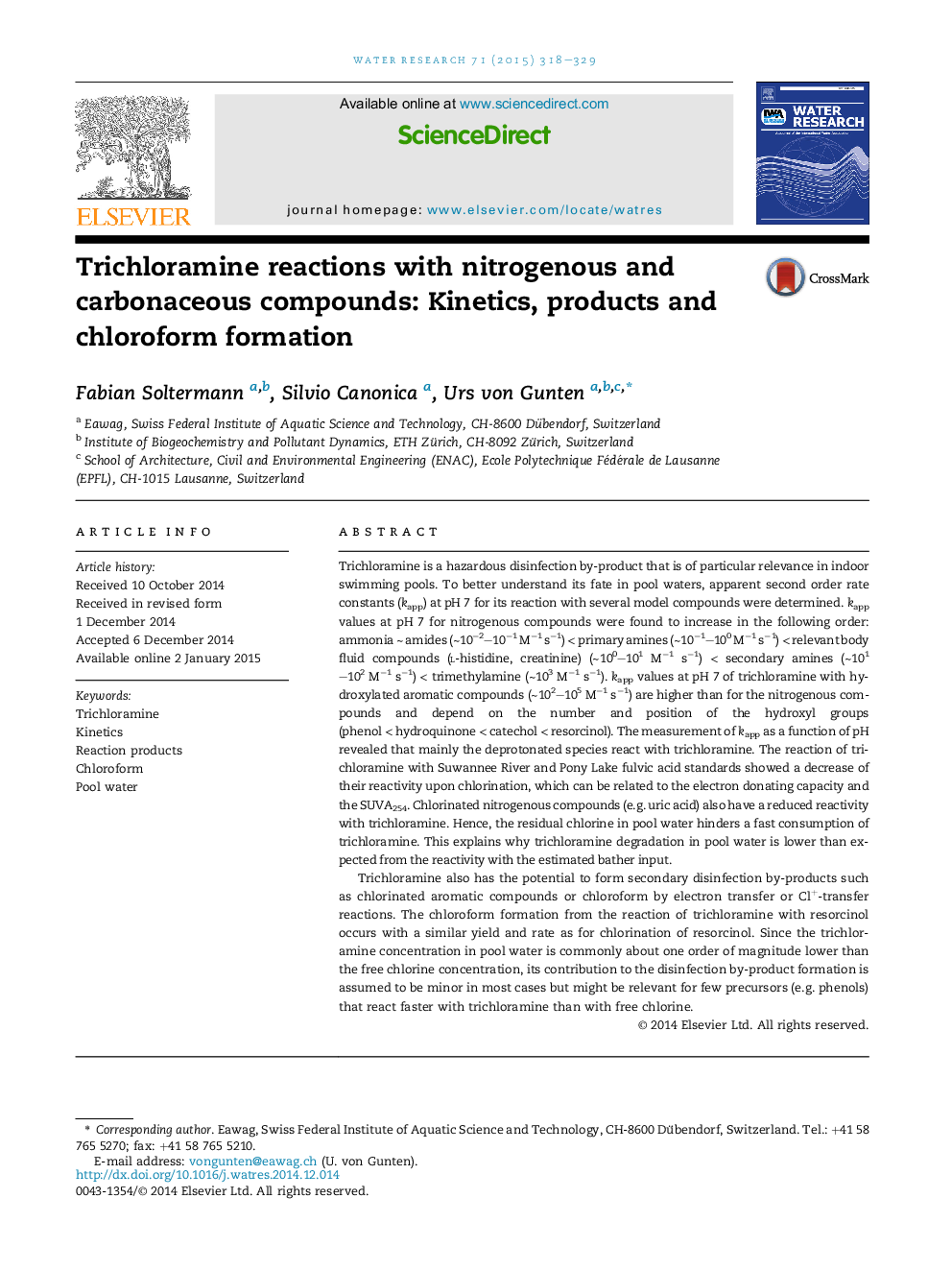| کد مقاله | کد نشریه | سال انتشار | مقاله انگلیسی | نسخه تمام متن |
|---|---|---|---|---|
| 4481189 | 1623097 | 2015 | 12 صفحه PDF | دانلود رایگان |
• Trichloramine reacts slowly (10−2–100 M−1 s−1) with amides and primary amines.
• Trichloramine reacts quickly with hydroxylated aromatic compounds (102–105 M−1 s−1).
• Chlorination lowers the reactivity of organic moieties with trichloramine.
• Trichloramine is able to react via Cl+-transfer or electron transfer reactions.
• Trichloramine forms chloroform in pool water but less than free chlorine.
Trichloramine is a hazardous disinfection by-product that is of particular relevance in indoor swimming pools. To better understand its fate in pool waters, apparent second order rate constants (kapp) at pH 7 for its reaction with several model compounds were determined. kapp values at pH 7 for nitrogenous compounds were found to increase in the following order: ammonia ∼ amides (∼10−2–10−1 M−1 s−1) < primary amines (∼10−1–100 M−1 s−1) < relevant body fluid compounds (l-histidine, creatinine) (∼100–101 M−1 s−1) < secondary amines (∼101–102 M−1 s−1) < trimethylamine (∼103 M−1 s−1). kapp values at pH 7 of trichloramine with hydroxylated aromatic compounds (∼102–105 M−1 s−1) are higher than for the nitrogenous compounds and depend on the number and position of the hydroxyl groups (phenol < hydroquinone < catechol < resorcinol). The measurement of kapp as a function of pH revealed that mainly the deprotonated species react with trichloramine. The reaction of trichloramine with Suwannee River and Pony Lake fulvic acid standards showed a decrease of their reactivity upon chlorination, which can be related to the electron donating capacity and the SUVA254. Chlorinated nitrogenous compounds (e.g. uric acid) also have a reduced reactivity with trichloramine. Hence, the residual chlorine in pool water hinders a fast consumption of trichloramine. This explains why trichloramine degradation in pool water is lower than expected from the reactivity with the estimated bather input.Trichloramine also has the potential to form secondary disinfection by-products such as chlorinated aromatic compounds or chloroform by electron transfer or Cl+-transfer reactions. The chloroform formation from the reaction of trichloramine with resorcinol occurs with a similar yield and rate as for chlorination of resorcinol. Since the trichloramine concentration in pool water is commonly about one order of magnitude lower than the free chlorine concentration, its contribution to the disinfection by-product formation is assumed to be minor in most cases but might be relevant for few precursors (e.g. phenols) that react faster with trichloramine than with free chlorine.
Figure optionsDownload high-quality image (182 K)Download as PowerPoint slide
Journal: Water Research - Volume 71, 15 March 2015, Pages 318–329
